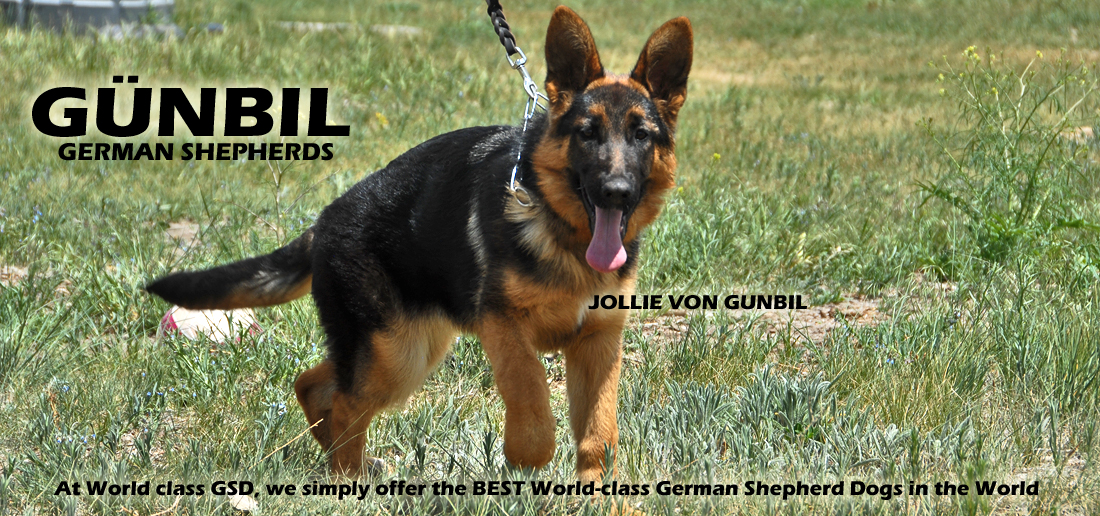
WHAT IS BEGLEITHUND - BH (Companion Dog)
Translates to "Companion Dog." The following is condensed from the DVG (Deutscher Verband der Gebrauchshundsportvereine) rules.
Dogs of all sizes and breeds are eligible; the minimum age is 12 months. The only allowable collar is a chain type "choke" collar, and the lead, when used, is attached to the dead ring. Generally, scores or points are not announced, rather the judge evaluates whether a handler/dog team have passed.
Part A must be passed for the team to do Part B. The first part of the exercises are the same as for Schutzhund 1 obedience through the first retrieve. Part A includes:
- Heeling on leash (15 points): Singly and within a group. The dog must keep its shoulderblades "level" with the handlers' knees.
- Heeling off leash (15 points): Singly and within a group. Gunshots are fired during the heeling. If the dog demonstrates any upset at the sounds, it must be excused immediately from the trial. A non-fearful reaction deducts points. The dog must demonstrate complete indifference.
- Sit (10 points): While heeling, the handler instructs the dog to sit. The handler does not interrupt his pace while the dog sits promptly. After several paces, the handler stops to face the dog. At the judge's direction, the hander returns to the dog and assumes the stationary heel position.
- Down With Recall (10 points): While heeling, the handler instructs the dog to down. The dog lays down promptly while the handler continues for another 30 paces, whereupon the handler turns to face the dog. At the judge's direction, the handler recalls the dog, who should come quickly and sit close in front. When told to heel, the dog returns to the handler's left side.
- Long Down (10 Points): The handler commands the dog to lay down at a spot chosed by the judge. The handler moves about 40 paces away within sight of the dog, but with his back turned to the dog. The dog must remain in the down position while another dog performs exercises 1 through 6.
part b
Part B consists of tests to evaluate the dog's ability to function in heavy traffic. These exercises are to be conducted in the open with areas with some traffic, but not inconveniencing the general public. For this reason, only dogs that pass Part A may take this part of the test. It is a time consuming test, and a maximum of 15 dogs per day per judge may be tested. There is no point allocation per exercise; the judge will evaluate the dog's performance and its ability to do the exercises well.
- Ability to Perform in Traffic: The handler and judge are instructed to proceed on leash down a designated walkway, street, or roadway. The dog should heel willingly on a loose leash. The dog must act with indifference toward pedestrian and other traffic including joggers and pedestrians. After negotiating the traffic on the roadway, the handler and dog proceed to the judge and stop, shake hands, converse. The dog is expected to ignore the judge and may stand, sit, or lay down quietly.
- Behavior of the Dog Under Extreme Traffic Conditions: The dog and handler now move through rather heavy and noisy pedestrian traffic. The handler must stop twith the first time ordering the dog to sit and the second time to lay down. The dog must remain calm and undisturbed.
- Behavior of the Dog Left Alone During Traffic Conditions: Finally, the handler and dog proceed to a relatively low traveled road. The handler secures the dog to a suitable tie off and moves out of sight of the dog, remaining out of sight for approximately two minutes. Another handler and (non aggressive) dog will pass within five paces of the secured dog which must remain calm during this exercise.
- All About German Shepherd Puppies
- Pet Disease and Allergies
- Hips and Elbows
- German Shepherd Dog Anatomy
- What is Schutzhund
- German Shepherd Behavior
- Quick Tips On German Shepherds
- Our Show Dogs










